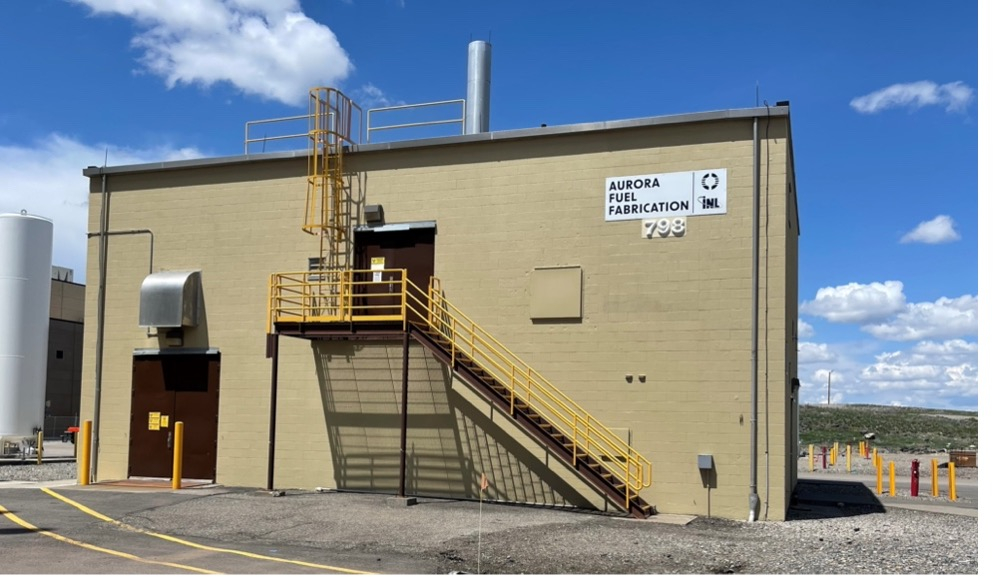Rich with Btus from oil and gas, the Permian Basin is megawatts-short. Meanwhile, the basin’s producers are looking for offsets to their carbon-rich products that are weighing on Scope 1 scores.
Enter nuclear—and a top Permian producer, Diamondback Energy, and a leading U.S. pressure-pumper, Liberty Energy.
Diamondback signed in April a 20-year power-purchase agreement with California-based Oklo Inc. for a 50-megawatt (MW) small nuclear reactor unit for its Permian operations.
Separately, Liberty made a $10 million investment last year in Oklo.
RELATED
Diamondback May Go Nuclear to Power Permian Basin Ops
Oxy, Other E&Ps Look to Alternative Power Sources for Ops

Chris Wright, Liberty chairman and CEO, told Hart Energy in April that Oklo is a next-generation nuclear company “that’s another potential adder to the world energy system.”
The shale revolution has allowed world energy use to expand to 600 exajoules per year, he said.
“If we’re going to produce 800 exajoules in 2050, where’s that extra 200 coming from?” he asked. “We need new shale basins, continued development of existing shale basins [and] maybe some new nuclear technology.”
‘Continue to increase’
“Small nuclear reactors could make sense as a low-cost, low-carbon, high-reliability alternative energy source for a company like Diamondback whose energy needs continue to increase,” Diamondback President Kaes Van’t Hof told Bloomberg,
Diamondback currently produces 463,000 boe/d net from the Permian Basin. It was ran a 13-rigs at work in late April, and plans to add fellow Permian producer Endeavor Energy Resources to its portfolio later this year, bringing its total production to 816,000 net boe/d.

Permian producers could generate electricity in-basin with associated gas, which they were paying up to $3/Mcf to offload in April as the Waha spot price collapsed, but those with reduced-carbon targets would be piling on more carbon if they use natural gas for power generation in producing carbon-based Btu.
Enverus sees growing in-basin market for electricity for all purposes, energy research firm Enverus reported in April. Its findings are that far West Texas’ power demand will more than double by 2040.
“Within the next few years, the Far West will need a large power generation build-out to meet the forecasted load growth,” said Riley Prescott, senior associate at Enverus Intelligence Research. “Without it, we expect power prices in the area will rise significantly.”
Fast-breeder reactor
Oklo’s model is a metal-fueled fission plant that can be sited where power is needed without requiring expensive and lengthy power-line transmission, according to the company. The reactor is liquid-metal cooled and non-pressurized. The plant is partially prefabricated and assembled onsite.
The technology is based on the Idaho National Laboratory’s Experimental Breeder Reactor (EBR) that, in 1951, was the first nuclear power generation plant; at the time it was known as the National Reactor Testing Station.
A liquid-metal, fast-neutron (fast-breeder) reactor is unmoderated and uses liquid metal as the coolant. “Breed” is used in its description because it produces more fuel than it consumes.
In 1964, its successor, the fast-reactor-model EBR-II demonstrated a closed fuel cycle. It was operational for 30 years.
The Oklo technology is similarly a fast-reactor. In tests, “starting from full power, the intermediate coolant pump was turned off while the control rods were prevented from inserting. The reactor temperature automatically stabilized within minutes,” Oklo reported.

In terms of scoring environmental points, carbon emissions are zero, and the fission fuel is recycled, a hallmark of the fast-reactor fission model.
Oklo has letters of interest for more than 50 of its plants, ranging in size from 15 MW to 50 MW. The 15 MW size costs less than $60 million.
And investors have shown interest in small nuclear.
In May, Oklo went public via a merger with blank-check AltC Acquisition Corp. Another firm, Nano Nuclear Energy, IPO’ed in early May in a six-week sprint from its initial filing with the Securities and Exchange Commission.
Nano’s Zeus reactor mobilizes in tractor-trailer fashion: The reactor sits on a trailer that is hooked up to a tractor.

‘A hot item’
Longtime oilfield services analyst Jim Wicklund, now an investment banker with PPHB, reported in April that “small nuclear reactors are becoming a hot item.”
PPHB hosted a breakfast in Midland to address several subjects, but talk was lit with nuclear. The growing availability “has spurred oil companies such as Diamondback to at least consider it as an alternative to diesel or natural gas” in field operations, Wicklund wrote in his weekly newsletter.
As for near-term deployment in the field, “we will take the ‘under,’” he added. But “just the fact that it is being discussed is a positive to me.”
In comparison with large nuclear plants, small modular reactors (SMRs) are less expensive, have a smaller footprint, use less fuel, have lower emissions, and are quickly installed, according to Fort Collins, Colorado-based DataHorizzon Research.
“These advantages are anticipated to drive significant adoption of [SMRs], fueling a notable upward trend in the market,” the firm reported in April.
It expects the market for SMRs will be $7.5 billion by 2032, with North America leading demand.
SMR and other nuclear developers include Brookfield Renewable, Fluor Corp., General Atomics, General Electric, Holtec International, Mitsubishi Heavy Industries, Rolls Royce Plc, TerraPower, Terrestrial Energy and X Energy, the firm added.
‘Quite interested’
The new interest in small reactors by the oil and gas industry has not surprised Jeff Merrifield, chairman of the U.S. Nuclear Industry Council, which represents some 80 operators in nuclear development.

“I think this has been bubbling along for some period of time,” he told E&P. “I think there are a number of folks in that industry who’ve been looking at this.”
Merrifield was appointed by President Bill Clinton to serve on the U.S. Nuclear Regulatory Commission in 1998 and named to a second term in 2002 by President Bush. He served through 2007. During that time, he visited all 104 of the then-operating U.S. power reactors and toured more than 140 abroad. before that role, he worked for the U.S. Senate Subcommittee on Superfund, Waste Control and Risk Assessment and was a legislative assistant to two U.S. senators. Currently, he leads the Pillsbury law firm’s nuclear energy practice.
“Where there are a number of folks who are quite interested [in nuclear application] is the developing market for mobile and micro-nuclear reactors,” Merrifield said.
The U.S. Army’s Project Pele has funded two demonstration reactors that would produce between 1.5 MW and 5 MW.
“Something of that size, you could put on the back of a tractor trailer in a container box,” he said. “Put them in a C-17, fly them halfway across the world and have them up and operating within 72 hours.”
Expectations are for beta demonstrations within a couple of years.
“That [mobile reactor] is a market that I think a number of folks in the exploration industries would find interesting because they really are suited for remote operations where you don’t have a localized power source,” Merrifield said.
Carbon-free
Among attendees at the Advanced Reactors Summit XI in Houston in April were more than 30 oil and gas company representatives. Among speakers, including Merrifield, was Caleb Tash, director of sustainability for Diamondback Energy.
Tash “made it quite clear they think this is a market for them and one that will help them meet their power operations, but do so in a carbon-free way,” Merrifield said.
Also speaking at the conference was Nick Morriss, director of business development for Shepherd Power, a business unit of oilfield services provider NOV Inc.
Another type of nuclear reactor is a small light-water design that produces some 300 MW. These are well suited to the growing power demand by data centers and for the replacement of coal plants. “Light-water reactors basically use tap water for their cooling and moderation” Merrifield said.
Then there are the non-light-water reactors, which include high-temperature gas reactors, molten-salt reactors and sodium fast reactors, all of which were developed by the Atomic Energy Commission in the 1950s.
Among all types of reactors, “I think for the oil and gas industry—and by extension the petrochemical industry—the interest is initially going to be in micro-reactors,” Merrifield said. “They will be the closest to actually being deployed in larger numbers. And then I think some of the high-pressure gas reactors and molten-salt reactors will be interesting and potentially deployable.”
Other potential oil and gas applications for nuclear include powering petrochemical plants and using the heat byproduct in cracking. Large offshore oil platforms could use a small nuclear reactor, he added.
Already in use
Mobile reactors are in use already. “We have a lot of portable reactors,” Merrifield noted. “People just don’t think about them: Every U.S. submarine has a nuclear power plant.”
The specs on those are classified, but what is public is that the U.S. Navy design for submarines is roughly a 20 MW plant using a pressurized-water reactor.
“But it is of a much different design than anything in the civilian world,” he added.
Aircraft carriers use two plants, each of which is roughly 40 MW. Altogether, the U.S. Navy has about 100 sub- and carrier-based mobile reactors in operation.
“We’ve been deploying mobile nuclear power plants as a country for 60-plus years,” he said. The design being considered for use in oil and gas operations “is something we have a lot of experience with.”
The first one deployed by the U.S. outside of strictly military purposes was a 15 MW to 20 MW reactor at McMurdo Sound in Antarctica as part of the U.S. Army nuclear power program. Another was a barge-mounted reactor deployed in the Panama Canal; and another, a tractor-borne mobile reactor deployed in Greenland.
“So we’ve been doing this for many years,” he said. “If you can have a power source that you can bring in on the back of a tractor trailer and provide the power you need for that remote operation, that’s a pretty desirable thing.”
The exajoules
Liberty’s Wright was in the nuclear and solar business before being part of the team that successfully tried a light-water frac on the Cotton Valley in East Texas in the mid-1990s. Mitchell Energy & Development Corp. picked it up and tried it in the Barnett, resulting in the shale breakthrough.
Wright’s undergraduate degree from Massachusetts Institute of Technology (MIT) was in mechanical engineering; graduate studies in electrical engineering were at University of California at Berkeley and MIT.
He concluded a recent quarterly earnings call with a summary of global advancement in energy supply.
“Are we in the midst of an energy transition that we hear so much about? The data says that the answer is ‘No,’” he said.
“This is not an opinion or a preference,” he continued. “Heck, I work in other areas of energy and began my career in nuclear and solar. This is simply an honest reading of the data.”
Of the 100 exajoules of energy added to global supply in the past 12 years, some 40% came from natural gas with half of that coming from U.S. shale. Oil provided 24%, also from U.S. shale. Another 14% came from coal; wind, 9%; solar, 4%; and hydro, 4%.
In short, 63% of energy supply growth came from oil and gas—"an increasing market share,” he said.
“How can we call this a transition …? Don’t get me wrong. I’m not celebrating this fact. I’m just calling out others for pretending it isn’t so.”
To supplement global supply, particularly to populations with none, “it would be very helpful if nuclear, which saw zero growth over the last 12-year period, geothermal and any other affordable, reliable energy source could contribute much, much more,” Wright said.
‘Tremendous’
A securities analyst asked Wright during the earnings call for the rationale behind the $10-million Oklo investment. Liberty is also invested in a geothermal developer, Fervo Energy Co.
While Liberty’s investment in Fervo is “barely a move at all from our core business, Oklo is definitely more of an outreach,” Wright said.
RELATED
The New Wildcatters: Geothermal Developers on the Hunt for Heat
Its Liberty Power Innovations unit, which supplies natural gas-fired power generation onsite, is “to deliver gas and electricity where it’s needed. And today, that’s in the oil field, running our frac fleets, … then it’s going to grow to other oilfield applications.”
The interest in Oklo’s technology as a small-grid solution “is tremendous” in the power generation business at large, he said. In the Permian in particular, “we held an event in Midland,” he said. Interest there was similarly piqued.
Liberty also has invested in Natron Energy, developer of sodium-ion batteries used in frac-site power storage. Wright said lithium-ion batteries “have some fundamental problems.” Natron’s sodium-ion brick is better suited to a frac job.
“It can discharge faster. It can recharge faster. It can live longer. It does not have the fire hazard” that lithium-ion batteries carry, he said. Of course, it has a lower power density, “so it doesn’t win on everything, but it wins on the things that matter for us,” Wright said.
Recommended Reading
CNOOC Makes Oil, Gas Discovery in Beibu Gulf Basin
2025-03-06 - CNOOC Ltd. said test results showed the well produces 13.2 MMcf/d and 800 bbl/d.
E&P Highlights: March 24, 2025
2025-03-24 - Here’s a roundup of the latest E&P headlines, from an oil find in western Hungary to new gas exploration licenses offshore Israel.
APA's Apache Reports Another Oil Discovery on Alaska's North Slope
2025-03-17 - APA Corp. and its partners plan flow tests after the success of the Sockeye-2 exploratory well.
E&P Highlights: Jan. 21, 2025
2025-01-21 - Here’s a roundup of the latest E&P headlines, with Flowserve getting a contract from ADNOC and a couple of offshore oil and gas discoveries.
Oxy CEO: US Oil Production Likely to Peak Within Five Years
2025-03-11 - U.S. oil production will likely peak within the next five years or so, Oxy’s CEO Vicki Hollub said. But secondary and tertiary recovery methods, such as CO2 floods, could sustain U.S. output.
Comments
Add new comment
This conversation is moderated according to Hart Energy community rules. Please read the rules before joining the discussion. If you’re experiencing any technical problems, please contact our customer care team.






